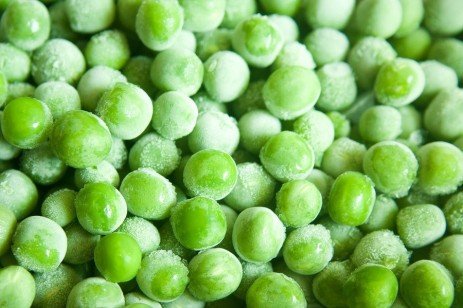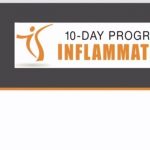Science of Freezing
Water and foods freeze differently. When water freezes and ice crystals form there is actually a small amount of heat produced. The temperature of the water remains at 32°F as the ice crystals grow, and then a rapid temperature drop occurs as the ice crystals cool. Because foods are a complex mixture of many substances, their freezing point is below the freezing point of water. A slow temperature drop occurs as ice crystals form within the food. The temperature then drops more quickly as the crystals cool inside the food. Each food will freeze differently based on things like the amount of water, sugar, muscle tissue or air in the food.
Rapid freezing improves the quality of the food. The faster food freezes, the smaller the crystals that form. Small crystals do less damage to cell walls. Slow freezing produces large ice crystals that punch through cell membranes. As a result, when foods with large ice crystals thaw, there is more dripping and loss of liquid. Small crystals are unstable and over time grow to form larger crystals. This is especially noticeable in the freeze-thaw cycle in frost-free freezers. During the defrosting period, the food thaws slightly allowing ice crystals to grow and rupture more cells when they refreeze. Opening the freezer door also allows heat to enter the freezer and repeat this freeze thaw cycle. A chest type freezer may be better in reducing heat loss from opening the door because warm air rises.
Freezer Burn
Evaporation occurs during the freeze-thaw cycle resulting in dehydration of the product. This is termed freezer burn, the dry, grayish/brown spots on the surface of the food. It is often more noticeable on meats because they are frequently inadequately wrapped. Freezer burn occurs when frozen food is damaged by crystal growth and dehydration exposing the food to oxygen. Oxygen has a bleaching effect on the food. Freezer burn produces a loss of texture, color, flavor, and aroma.
To prevent freezer burn:
- Freeze food quickly and at as low a temperature as possible. Zero degrees F or lower is recommended.
- If you are freezing a large quantity of food at one time, set the freezer temperature 10 degrees lower than normal until the food is frozen.
- To avoid fluctuating temperatures do not open the freezer more than necessary.
- Choose a manual defrost freezer.
- Foods like fish fillets can be dipped in ice water and individually tray frozen. This creates a coating of ice around the product to prevent exposure to air.
- Select plastic bags labeled specifically for freezing; storage bags are not vapor proof.
- Squeeze air out of bags before sealing and seal tightly. Vacuum seal bags also remove air.
- Minimize headspace in plastic containers. Place a crumpled piece of plastic wrap or waterproof paper on top of frozen fruit to keep it under the sugar syrup.
- Freezer paper has a coating that prevents the transfer of air. Over-wrap packages of meat with freezer paper or heavy-duty aluminum foil.
Inactivating Enzymes
Surface discoloration occurs when enzymes in foods are exposed to the oxygen in air. These enzymes are inactivated in most vegetables by blanching the raw vegetable in boiling water or in steam for a specified amount of time. Steam blanching takes 50% more time and is desirable for foods with a high moisture content such as broccoli and cauliflower. Blanching also softens the food making it easier to package and destroys some microorganisms. Completely cool blanched foods before packing and putting in the freezer. The enzymes in foods that are cooked before freezing such as pumpkin puree or applesauce are destroyed in the cooking process.
Enzymes in fruits are usually controlled by adding ascorbic acid (vitamin C) and/or sugar. Sugar may be added as a syrup, or sprinkled on the fruit drawing out the natural juices of the fruit. Freezing fruit in fruit juice containing ascorbic acid will help to control color loss but will not have the benefit of texture control found in sugar syrups.
Penn State Extension’s Let’s Preserve series provides specific guidelines for freezing a variety of fruits and vegetables.




